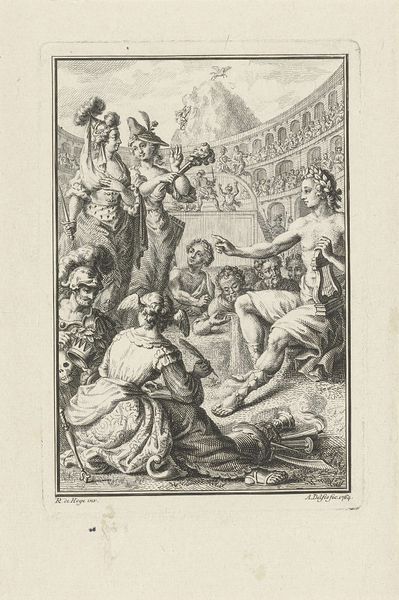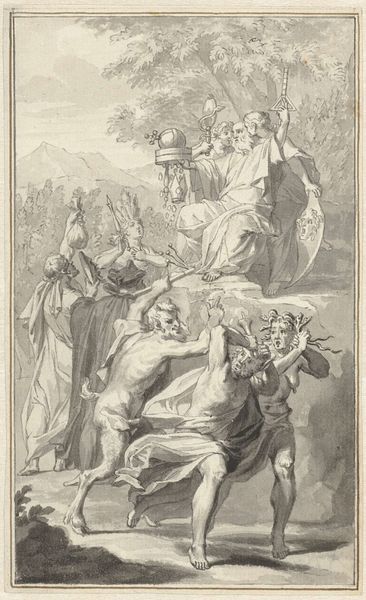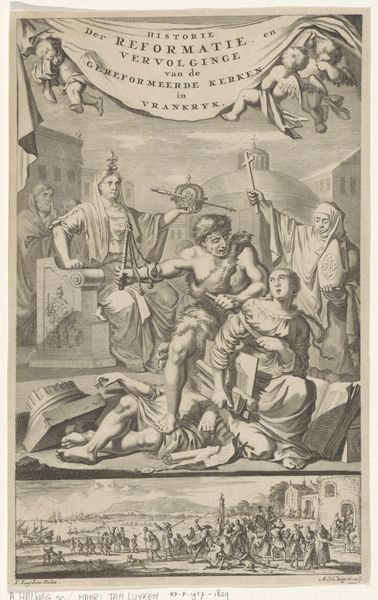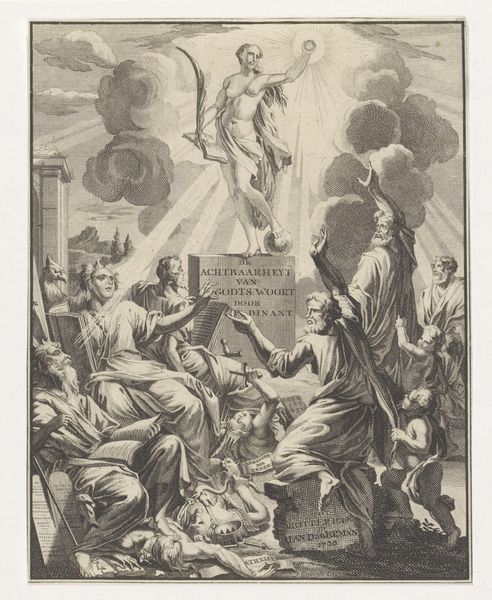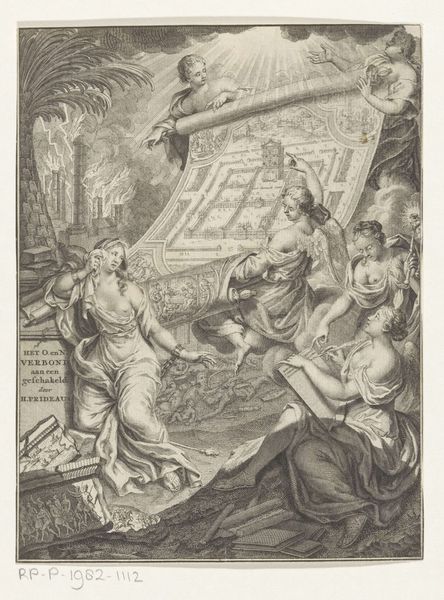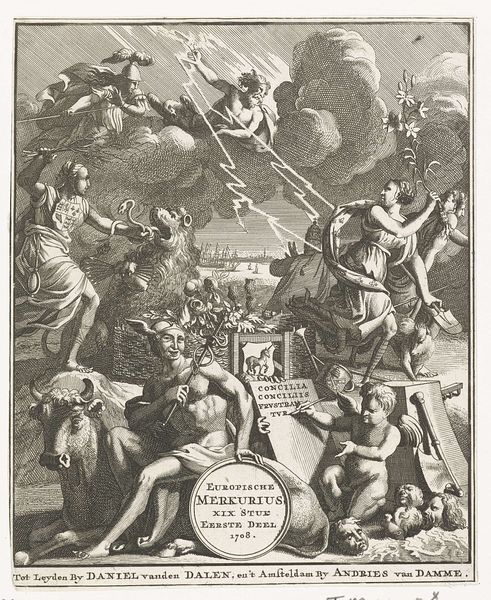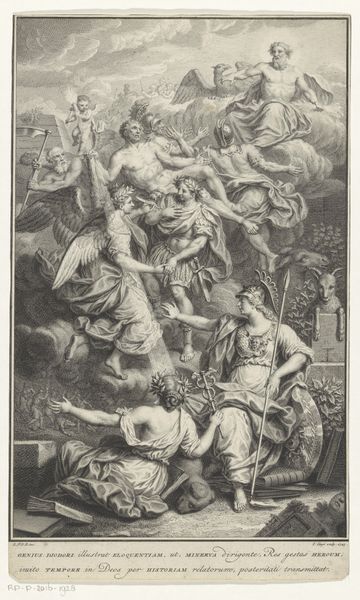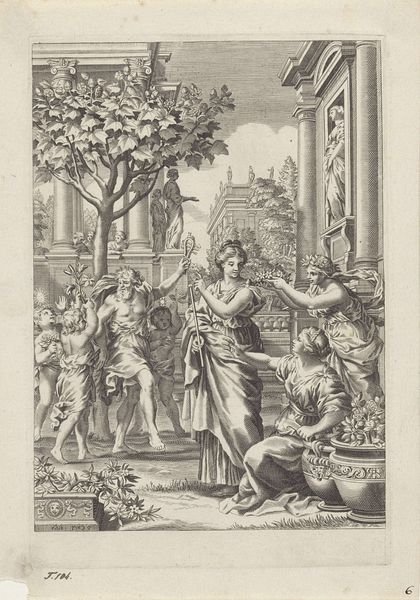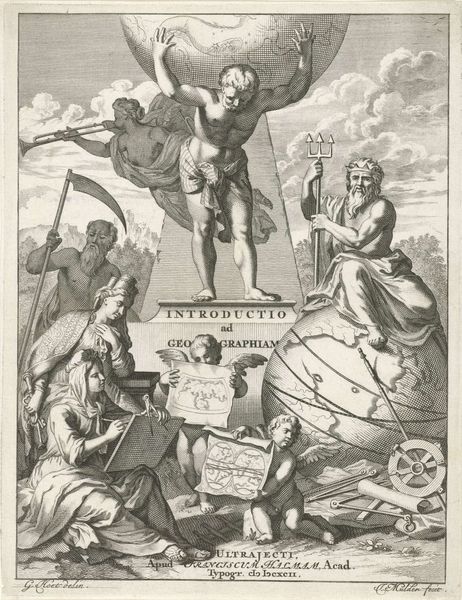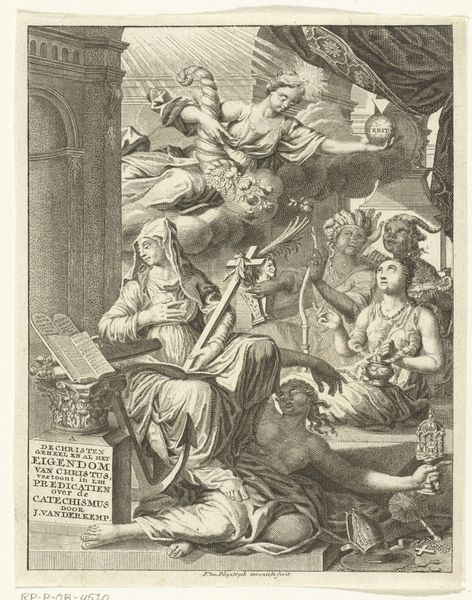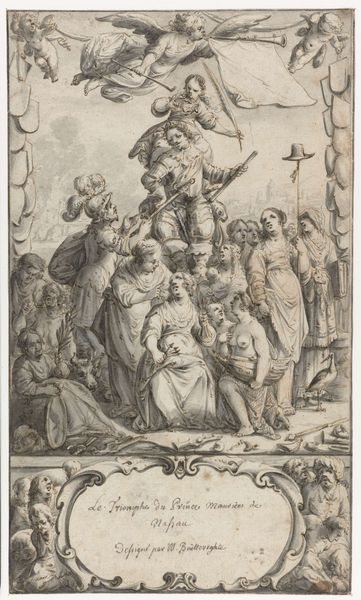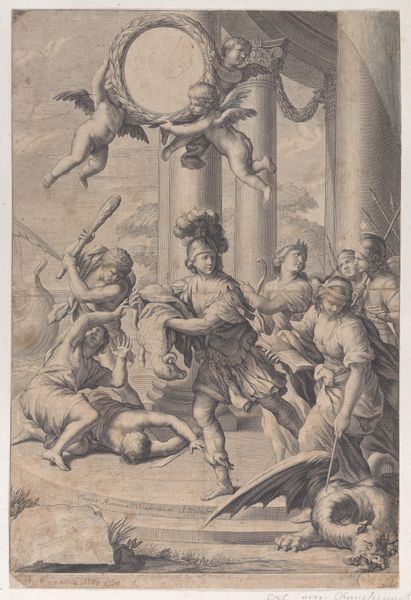
Titelpagina voor Giovanni Battista, Le vite de' pittori, scvltori et architetti, Rome, 1642 1642
0:00
0:00
print, engraving
#
allegory
#
baroque
# print
#
figuration
#
history-painting
#
italian-renaissance
#
engraving
Dimensions: height 220 mm, width 155 mm
Copyright: Rijks Museum: Open Domain
Curator: This engraving, crafted in 1642 by Cornelis Bloemaert, serves as the title page for Giovanni Battista’s "Le vite de' pittori, scvltori et architetti," which translates to "Lives of the Painters, Sculptors and Architects." It’s currently housed in the Rijksmuseum. Editor: What strikes me is the rather dramatic, almost theatrical presentation. There’s such a sense of struggle and triumph intertwined in this single image. It really draws you in. Curator: Absolutely. This artwork speaks to the Baroque fascination with allegory. We see figures representing different arts—painting, sculpture, architecture. Note the central pedestal with the eagle, symbolizing power and inspiration, which elevate the biographies of the artists featured in Battista's book. Editor: I'm also interested in the fallen figure at the base, writhing in seeming agony. Who does this refer to, and what does it signify to the image? Curator: A great observation! It probably represents Ignorance or Envy, literally being overcome by the accomplishments celebrated in the book. Consider that historically, the "lives" of artists were often presented as heroic narratives. The imagery underlines the narrative: genius vanquishes the forces of darkness. It is no mere presentation of talent but a claim of moral value. Editor: So, in effect, this wasn’t just a celebration of individual achievement, but also an assertion of art's cultural and societal value in the face of its perceived detractors? It brings forth modern ideas around creative labor and how its impact is felt across other sections of industry and society. Curator: Precisely. Bloemaert cleverly used symbolism rooted in the context of his time, and of the art movements, to make a larger argument about the purpose of art. The very construction of artistry, and biography, as a source of social influence comes under the frame. Editor: Examining its history adds dimensions that you would miss if judged for aesthetic value. Thank you. I am moved by how images gain so much more richness and clarity, becoming reflections of complex value. Curator: Exactly, the artwork comes alive only through layers of critical examination.
Comments
No comments
Be the first to comment and join the conversation on the ultimate creative platform.
